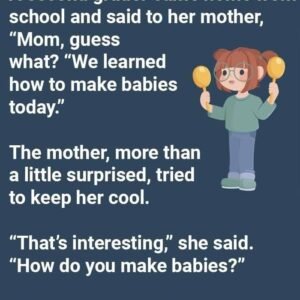One day, a second grader returned home from school and excitedly exclaimed to her mother, “Mom, you won’t believe what we learned today! We learned how to make babies!” The mother, taken aback by her daughter’s unexpected statement, worked hard to maintain her composure and respond calmly.
“Oh, really?” she replied, trying to sound interested while her mind raced with questions. “That sounds intriguing. Can you tell me how you make babies?”
The little girl, brimming with enthusiasm, explained, “It’s really easy! You just take the letter ‘y,’ change it to ‘i,’ and then add ‘es.’”
In that moment, the mother realized that her daughter was not talking about the biological process of reproduction, but rather about a spelling rule they had learned in class. The girl was referring to the grammatical transformation of words, specifically how to make them plural. For instance, the word “baby” becomes “babies” by following the rule of changing the “y” to an “i” and adding “es” at the end.
This innocent misunderstanding highlighted the difference between a child’s perspective and adult assumptions. The mother couldn’t help but chuckle at the simplicity of her daughter’s explanation, appreciating the innocence and clarity with which children view the world. It was a delightful reminder of how language can sometimes lead to amusing interpretations, especially when viewed through the eyes of a child.
In the end, the conversation turned into a light-hearted moment between mother and daughter, showcasing the joy of learning and the playful nature of language. It served as a reminder that sometimes, the most straightforward explanations can lead to the most entertaining misunderstandings, and that children often have a unique way of interpreting the lessons they learn in school.
